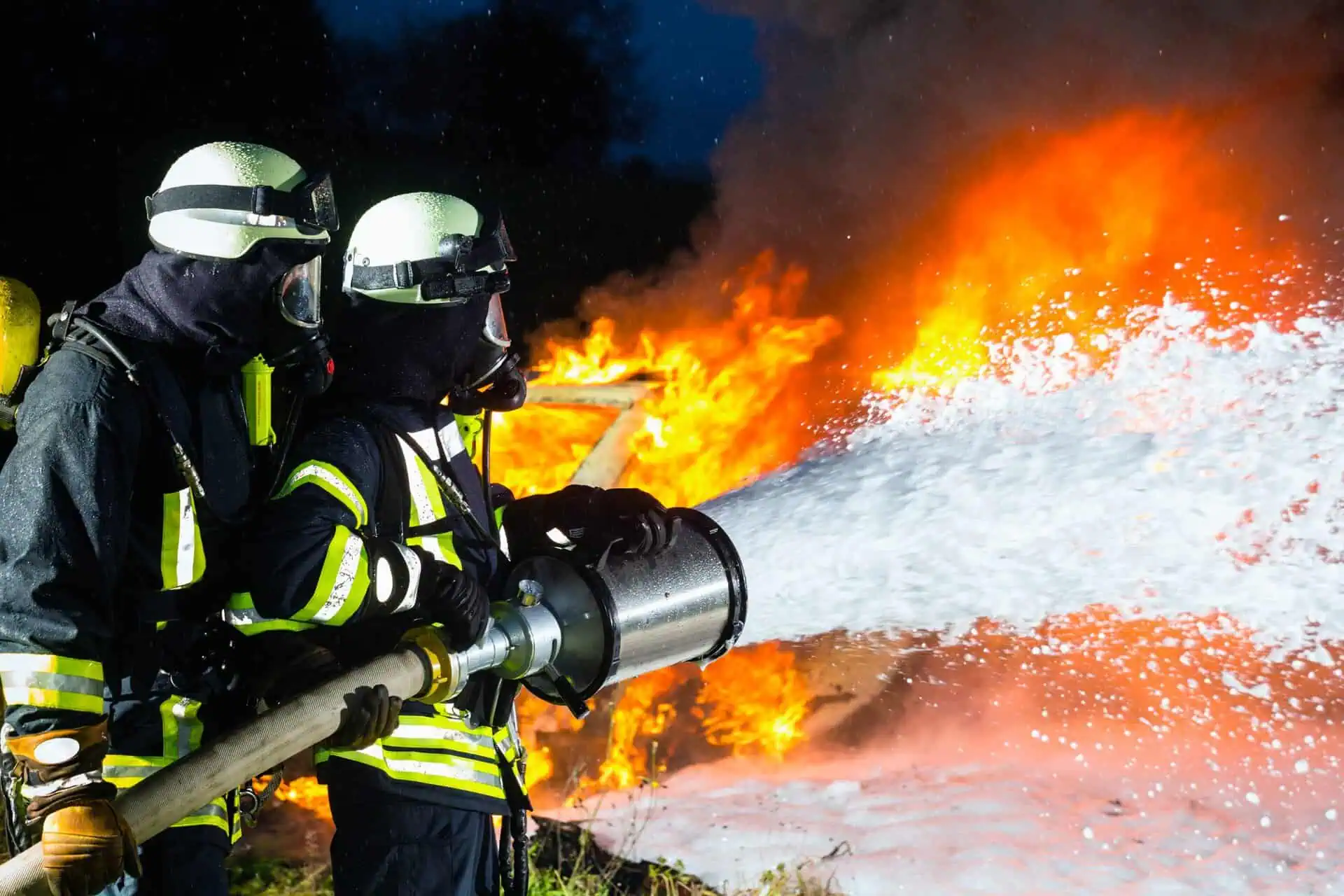FAQ: Who is Eligible for the AFFF Cancer Lawsuit?
- Last Updated: June 12th, 2025

Attorney Jessica Paluch-Hoerman, founder of TruLaw, has over 28 years of experience as a personal injury and mass tort attorney, and previously worked as an international tax attorney at Deloitte. Jessie collaborates with attorneys nationwide — enabling her to share reliable, up-to-date legal information with our readers.
Legally Reviewed
This article has been written and reviewed for legal accuracy and clarity by the team of writers and legal experts at TruLaw and is as accurate as possible. This content should not be taken as legal advice from an attorney. If you would like to learn more about our owner and experienced injury lawyer, Jessie Paluch, you can do so here.
Fact-Checked
TruLaw does everything possible to make sure the information in this article is up to date and accurate. If you need specific legal advice about your case, contact us by using the chat on the bottom of this page. This article should not be taken as advice from an attorney.
Key takeaways:
- Individuals who have developed cancer due to exposure to AFFF, a firefighting foam widely used by firefighters for its ability to extinguish flammable liquid fires, have initiated legal proceedings seeking compensation.
- To pursue an AFFF cancer lawsuit, certain qualifications and requirements related to firefighting foam and PFAS must be met.
- There have been significant developments in the firefighting foam (AFFF) cancer lawsuit landscape involving PFAS.
Who is Eligible for the AFFF Cancer Lawsuit?
Question: Who is eligible for the AFFF Cancer Lawsuit?
Answer: Eligibility for the AFFF Cancer Lawsuit primarily applies to individuals, such as veterans or workers in certain industries, who may have been exposed to Aqueous Film-Forming Foam (AFFF) during their service or in specific environments.
Those who have developed health conditions, including cancer, potentially linked to this exposure may qualify for legal action.
The AFFF cancer lawsuit focuses on the alleged contamination caused by AFFF, which contains harmful chemicals like perfluorooctanoic acid (PFOA) and perfluorooctane sulfonate (PFOS).
These substances have been associated with numerous health risks, including cancer, and may also impact those eligible for VA disability compensation.
On this page, we’ll discuss eligibility for the AFFF cancer lawsuit in further depth, potential AFFF lawsuit settlement amounts, studies linking AFFF firefighting foam to cancer, and much more.
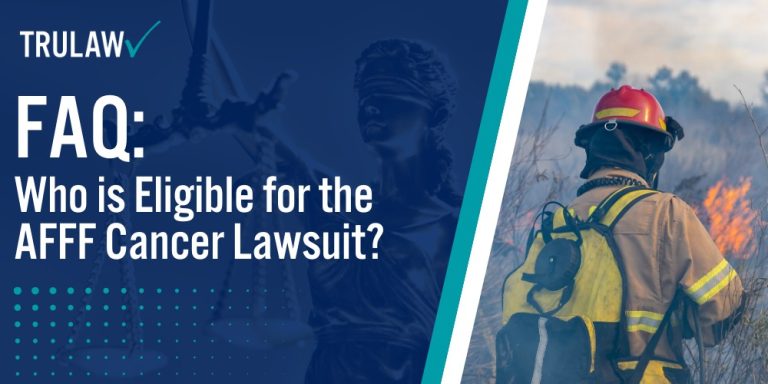
Intro to the AFFF Cancer Lawsuit
Aqueous Film-Forming Foam (AFFF) has long been used in firefighting and industrial applications due to its effectiveness in combating flammable liquid fires.
However, recent studies have raised concerns about the health risks associated with AFFF, particularly its connection to an increased cancer risk.
The chemicals in AFFF, specifically Per- and polyfluoroalkyl substances (PFAS), are believed to be the primary cause of these health risks.
Individuals who have been exposed to toxic firefighting foam and later developed cancer are now pursuing legal action against AFFF manufacturers.
TruLaw works to support those affected by AFFF exposure in exploring their legal options.
If you or a loved one have been diagnosed with cancer following exposure to AFFF firefighting foam, you may qualify to file an AFFF lawsuit and seek financial compensation.
Contact TruLaw for more information by using the chat on this page to instantly determine if you’re eligible to file an AFFF lawsuit.
The experienced firefighting foam lawyers at TruLaw and our partner law firms are here to support you through every step of the legal process.
Reach out today to learn how we can assist you in exploring your legal options.
Table of Contents
What is Aqueous Film Forming Foam (AFFF)?
Aqueous Film Forming Foam (AFFF) is a firefighting foam that has been used extensively since the 1960s to suppress flammable liquid fires.
It is particularly effective for fighting fires involving hydrocarbon fuels like gasoline, oil, and jet fuel — making it a valuable tool for protecting both lives and property in high-risk environments.
AFFF works by creating a thin film on the surface of burning fuels, preventing re-ignition.
Over the years, various formulations of AFFF have been developed using a mix of water, hydrocarbon surfactants, fluorochemical surfactants, and stabilizing agents.
One key ingredient in some types of AFFF is fluorosurfactants, which fall under the category of PFAS chemicals, also referred to as “forever chemicals.”
PFAS are synthetic chemicals known for their carbon-fluorine bonds, which allow AFFF to form its protective film.
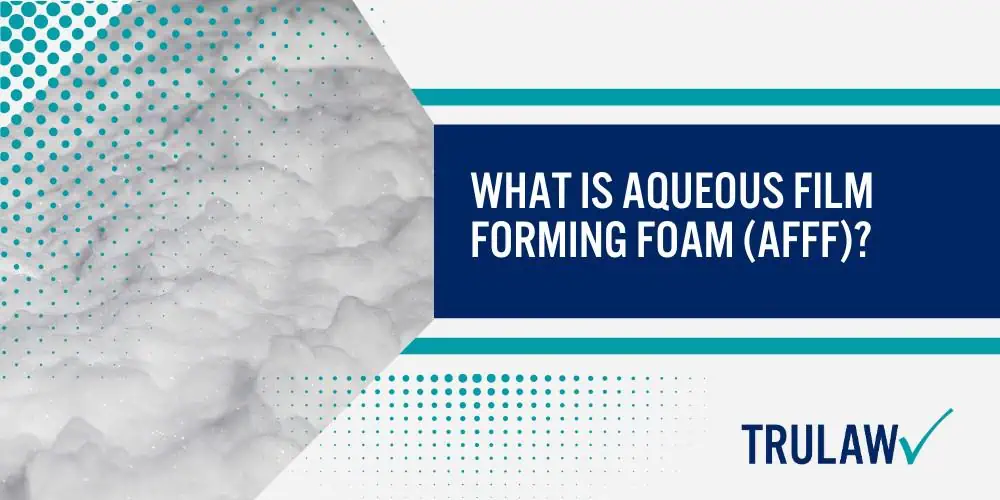
However, PFAS chemicals are notorious for their persistence in both the environment and the human body.
These substances can accumulate in soil, groundwater, and surface water, particularly near sites where AFFF has been used (such as airports, military bases, and firefighting training facilities).
As a result, people have been exposed to PFAS through direct contact with AFFF, contaminated drinking water, and food sources.
Scientific studies have linked PFAS exposure to several health concerns, including an increased risk of certain cancers, hormonal imbalances, developmental issues, and immune system disorders.
Health Risks Associated with AFFF Firefighting Foam
AFFF and PFAS are known to persist in the human body for extended periods of time.
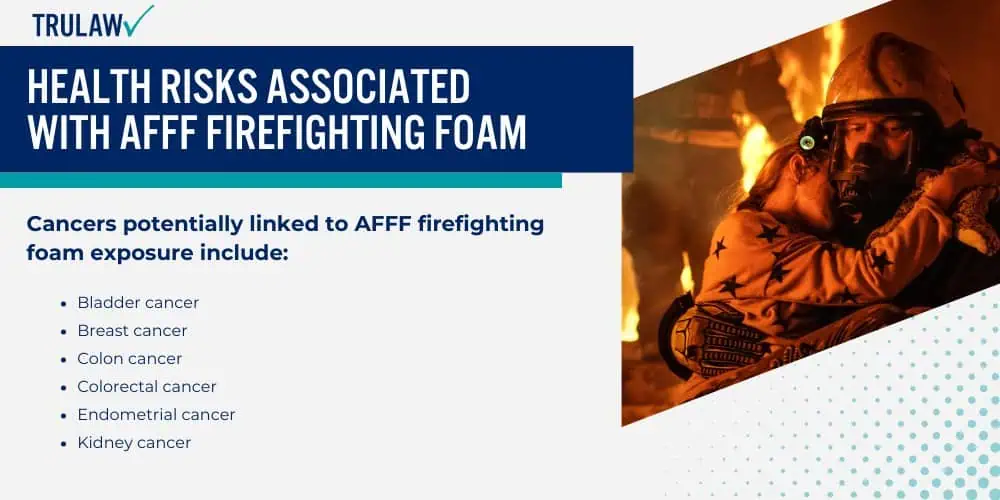
Once PFAS chemicals are ingested, inhaled, or absorbed through the skin, they can accumulate in various organs and tissues — remaining in the body for long durations due to their resistance to breaking down.
This prolonged presence of PFAS is linked to numerous health concerns, particularly after long-term exposure.
Cancer Risks from AFFF Exposure
A growing body of scientific research, including studies from the Environmental Protection Agency, has raised concerns about the relationship between PFAS exposure and cancer.
Certain PFAS chemicals found in AFFF firefighting foam have been identified as potential carcinogens, contributing to an increased risk of cancer for those exposed to these substances.
Cancers potentially linked to AFFF firefighting foam exposure include:
- Bladder cancer
- Breast cancer
- Colon cancer
- Colorectal cancer
- Endometrial cancer
- Kidney cancer
- Leukemia
- Liver cancer
- Lymphoma
- Mesothelioma
- Multiple Myeloma
- Non-Hodgkin Lymphoma
- Ovarian cancer
- Pancreatic cancer
- Prostate cancer
- Rectal cancer
- Testicular cancer
- Thyroid cancer
Bladder Cancer
Bladder cancer affects the inner layers of the bladder, often leading to symptoms such as blood in the urine or increased frequency of urination.
Emerging evidence has suggested a possible connection between AFFF foam exposure and bladder cancer.
Breast Cancer
Breast cancer, one of the most commonly discussed cancers in AFFF cases, involves a diverse group of malignancies originating from various breast tissues.
Research has demonstrated that PFAS exposure may increase the risk of breast cancer by as much as 13 times.
Colon Cancer
Colon or colorectal cancer begins in the lining of the colon or rectum and may start as benign polyps, which can develop into invasive cancer.
Scientific studies have linked PFAS chemicals to an increased risk of colon cancer.
Kidney Cancer
Renal cell carcinoma, or kidney cancer, involves the abnormal growth of cells in the kidneys.
Research has indicated a growing connection between toxic firefighting foam exposure and an elevated risk of developing kidney cancer.
Recent studies suggest a correlation between PFAS exposure and this type of cancer.
Liver Cancer
Liver cancer, a life-threatening condition, occurs when malignant cells grow uncontrollably in the liver.
Studies have shown that PFAS accumulation can damage liver tissues and potentially lead to cancer.
Research published in scientific journals has further highlighted the potential link between AFFF exposure and liver cancer.
Pancreatic Cancer
Pancreatic cancer is an aggressive form of cancer that often remains undetected until advanced stages.
Studies have shown evidence that PFAS exposure can cause oxidative stress in pancreatic cells, increasing the risk of cancer over time.
Prostate Cancer
Prostate cancer, a slow-growing cancer affecting the prostate tissue, is most common among older men.
Although research into the connection between AFFF exposure and prostate cancer is still emerging, some studies suggest that hormonal changes combined with PFAS exposure may contribute to the development of cancerous cells in the prostate.
Rectal Cancer
Rectal cancer, which affects the lower part of the large intestine, is another malignancy under investigation for possible links to AFFF exposure.
While research into the connection is ongoing, some studies suggest a potential association that warrants further exploration.
Testicular Cancer
Testicular cancer originates in the germ cells that develop into sperm.
Research has indicated potential links between PFAS exposure and an increased risk of testicular cancer, particularly due to PFAS’s impact on hormone production and levels in the body.
Thyroid Cancer
Thyroid cancer begins in the follicular cells of the thyroid gland, which produces hormones that support bodily functions.
Evidence from scientific research has pointed to a connection between PFAS exposure and thyroid cancer, as these chemicals can disrupt normal thyroid function, leading to the development of malignant cells.
Who Has Been Exposed to Toxic Firefighting Foam?
Certain professions face a greater risk of exposure to AFFF due to their regular use of firefighting foam or handling of PFAS-containing materials.
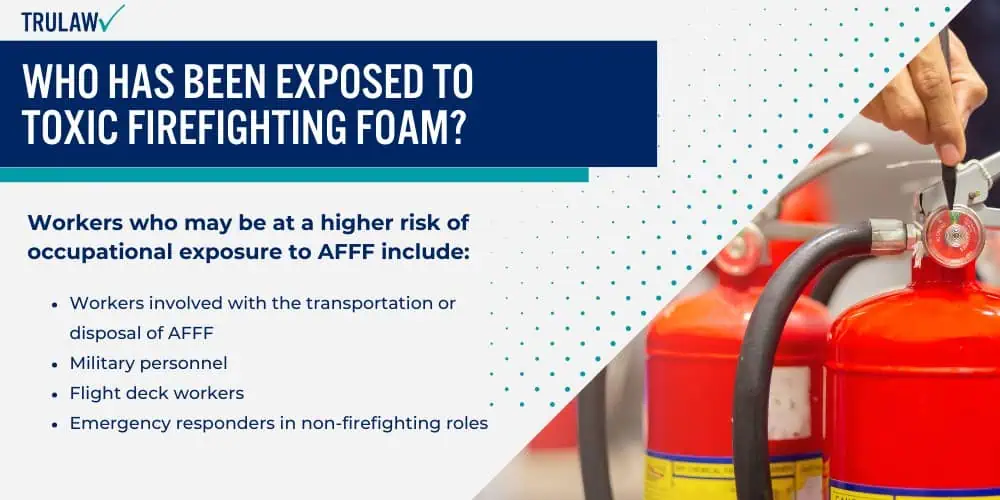
Workers who may be at a higher risk of occupational exposure to AFFF include:
- Workers involved with the transportation or disposal of AFFF
- Military personnel
- Flight deck workers
- Emergency responders in non-firefighting roles
- Airport workers
- Municipal firefighters
- Chemical plant workers
- Military firefighters
Municipal Firefighters
Municipal firefighters respond to various emergencies, including fires involving flammable liquids such as gasoline and oil.
AFFF has commonly been used in these situations to suppress and extinguish such fires.
Due to this, municipal firefighters may face a heightened risk of exposure to AFFF and PFAS chemicals during their operations.
Military Firefighters
Military firefighters are tasked with protecting personnel and equipment on bases and other military installations.
Their exposure to AFFF may be more frequent than that of municipal firefighters, as military environments often store large quantities of flammable fuels and chemicals.
The extensive use of firefighting foam by the U.S. military increases the likelihood of regular exposure.
Military Personnel
Beyond military firefighters, other personnel stationed at military bases may encounter AFFF during training exercises or in emergency response situations.
With AFFF stockpiles commonly found on military bases, the risk of exposure extends to a broader range of military personnel.
Airport Workers
Airports depend on AFFF to combat aircraft-related fires effectively.
Airport firefighters, who are trained to respond to aviation emergencies, frequently use AFFF to handle fuel-based fires on airfields.
Additionally, other airport staff involved in emergency response or aircraft maintenance may be at risk of exposure during these operations.
Flight Deck Workers
Flight deck workers, whether on aircraft carriers or at airports, manage aircraft during takeoff, landing, and maintenance operations.
Their proximity to firefighting activities, particularly in response to potential fuel fires, increases the likelihood of AFFF exposure.
Chemical Plant Workers
Workers in certain industrial environments, such as chemical plants, may also encounter AFFF.
These facilities use firefighting foam to protect against flammable liquid fires.
Employees in these settings may be exposed to AFFF and PFAS chemicals, especially in industries involved with the manufacturing, storage, or handling of hazardous materials.
Workers Involved with Transportation or Disposal of AFFF
The transportation and disposal of AFFF present additional exposure risks.
Workers tasked with moving or disposing of AFFF materials, such as truck drivers, clean-up crews, and specialized disposal teams, may come into contact with these chemicals.
Precautions must be taken to minimize exposure and prevent environmental contamination.
Emergency Responders in Non-Firefighting Roles
In some cases, emergency responders who are not primarily firefighters — including law enforcement officers, emergency medical personnel, or hazardous materials teams — may be exposed to AFFF during chemical spills or accidents involving flammable liquids.
If exposed, they may be eligible to pursue legal claims related to AFFF exposure.
Eligibility to File an AFFF Firefighting Foam Lawsuit
Lawsuits related to exposure to AFFF firefighting foam are being filed against manufacturers by individuals who have experienced health problems linked to this exposure.
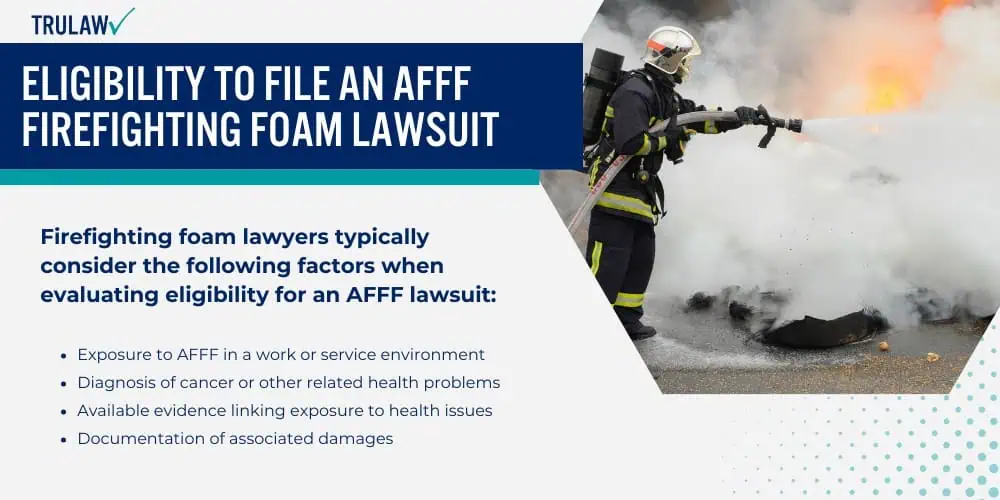
If you or a loved one were exposed to AFFF and later developed health issues, you may be eligible to pursue legal action.
The firefighting foam attorneys at TruLaw and our partner law firms can help determine if you qualify for an AFFF lawsuit by assessing your exposure, related health concerns, and other relevant factors.
Use the chat on this page for an instant case evaluation to quickly determine if you qualify to file an AFFF lawsuit.
Firefighting foam lawyers typically consider the following factors when evaluating eligibility for an AFFF lawsuit:
- Exposure to AFFF in a work or service environment
- Diagnosis of cancer or other related health problems
- Available evidence linking exposure to health issues
- Documentation of associated damages
Evidence of Occupational Exposure
Many individuals have encountered AFFF or PFAS-containing materials through their jobs, particularly in firefighting, military service, chemical plants, and other industries that regularly handle firefighting foam.
If you were exposed to firefighting foam in your workplace, you may be eligible to file an AFFF lawsuit.
It’s important to collect evidence that details your exposure history (such as employment records or other documentation).
Cancer Diagnosis or Related Health Conditions
Individuals exposed to toxic chemicals in AFFF often face serious health issues.
To support your claim, it’s helpful to gather and maintain medical records that document your diagnosis.
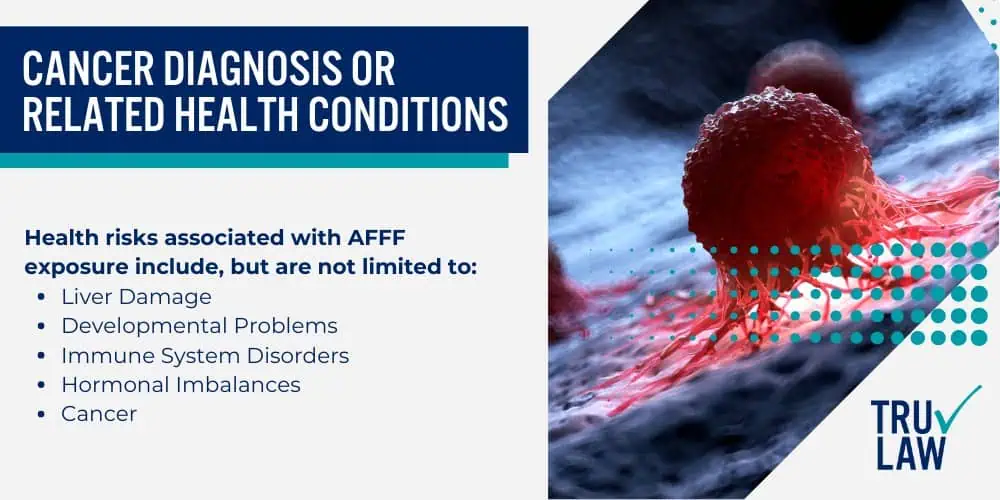
Health risks associated with AFFF exposure include, but are not limited to:
- Liver Damage: Prolonged exposure to PFAS can lead to liver injury due to the accumulation of these chemicals in the liver, disrupting its metabolic functions.
- Developmental Problems: Exposure to PFAS during pregnancy can cause delays in fetal development and other adverse effects.
- Immune System Disorders: PFAS exposure may weaken immune responses, making individuals more vulnerable to infections.
- Hormonal Imbalances: PFAS can interfere with hormone regulation, affecting reproductive health and thyroid function.
- Cancer: Malignant cell growth resulting in tumors that can be life-threatening.
Evidence in an AFFF Firefighting Foam Lawsuit
Gathering strong evidence is an important step in filing an AFFF lawsuit.
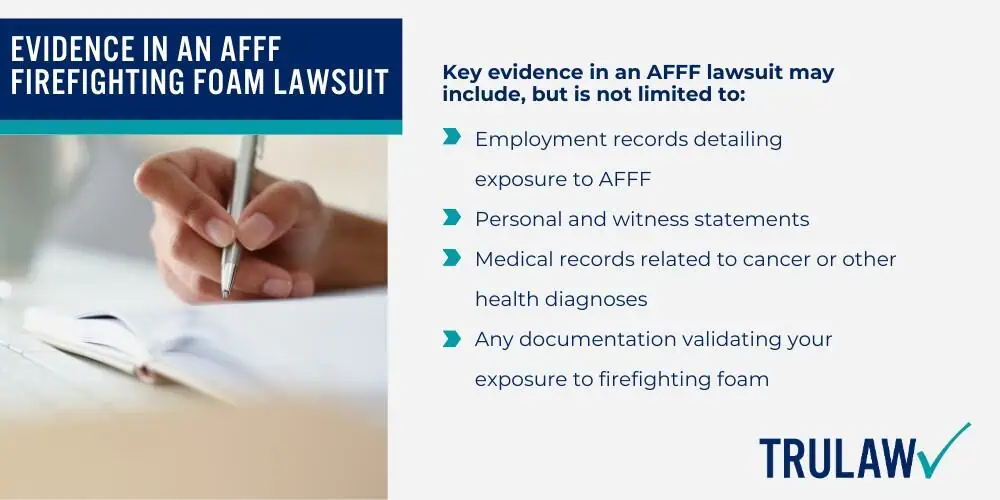
Key evidence in an AFFF lawsuit may include, but is not limited to:
- Employment records detailing exposure to AFFF
- Personal and witness statements
- Medical records related to cancer or other health diagnoses
- Any documentation validating your exposure to firefighting foam
Damages in AFFF Lawsuits
Damages in an AFFF lawsuit refer to the losses incurred due to exposure to PFAS chemicals in firefighting foam — both economic and non-economic.
These can cover a wide range of hardships experienced by the affected individual.
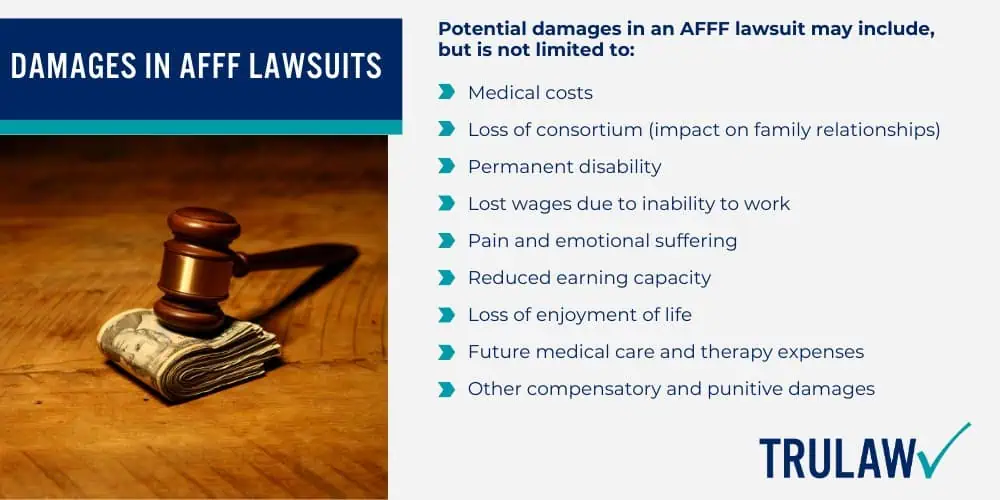
Potential damages in an AFFF lawsuit may include, but is not limited to:
- Medical costs
- Loss of consortium (impact on family relationships)
- Permanent disability
- Lost wages due to inability to work
- Pain and emotional suffering
- Reduced earning capacity
- Loss of enjoyment of life
- Future medical care and therapy expenses
- Other compensatory and punitive damages
TruLaw: Your AFFF Firefighting Foam Cancer Law Firm
We are currently accepting clients nationwide for firefighting foam cancer lawsuits.
If you or a loved one were exposed to toxic PFAS chemicals in firefighting foam and have since developed cancer or other related health issues, you may be eligible to file an AFFF lawsuit.
Contact TruLaw for more information by using the chat on this page to instantly determine if you qualify for the AFFF firefighting foam lawsuits.
We recognize the serious nature of AFFF-related health risks and the impact they can have on individuals and families.
The experienced firefighting foam lawyers at TruLaw and our partner law firms are committed to supporting clients throughout the legal process as they explore their legal options.
Reach out to us to learn more about how we can assist.
AFFF Lawsuit Frequently Asked Questions
-
There has not yet been an AFFF firefighting foam settlement.
However, AFFF lawyers estimate that potential AFFF lawsuit settlement amounts may range between $20,000 and $600,000 (or more), depending on the specific details of each case and other individual factors.
These estimates are not guarantees, but rather projections based on past settlements in similar cases involving cancer diagnoses and hazardous substances.
For a better understanding of what you might expect in your case, reach out to TruLaw to discuss your situation and what the possible outcomes may look like.
You can do so by using the chat on this page for an instant case evaluation and to quickly determine if you may be eligible to file an AFFF lawsuit.
-
No, there is no AFFF class action lawsuit for claims involving personal injuries related to AFFF exposure.
Instead, AFFF lawsuits are being handled through a multidistrict litigation (MDL).
The AFFF MDL is centralized in the US District Court for the District of South Carolina, where thousands of lawsuits are being processed together to streamline the legal process.
Some law firms may mistakenly advertise an “AFFF Class Action MDL” or an “AFFF Firefighting Foam Class Action Lawsuit,” but these terms are not accurate descriptions of the current legal process.
-
The AFFF Firefighting Foam MDL refers to a consolidated AFFF litigation for claims related to personal injuries and environmental contamination caused by AFFF use.
This MDL is centralized in the US District Court for the District of South Carolina, where many cases are being grouped together to increase efficiency.
Multidistrict litigation (MDL) is a legal process used to handle individual cases involving similar claims, helping to speed up proceedings for cases with overlapping facts or defendants.
-
Exposure to PFAS chemicals in firefighting foam has been associated with various cancers and other health complications.
Some of the potential health risks include, but are not limited to:
- Thyroid cancer
- Thyroid disease
- Colorectal cancer
- Colon cancer
- Rectal cancer
- Prostate cancer
- Bladder cancer
- Kidney cancer
- Testicular cancer
- Breast cancer
- Pancreatic cancer
- Liver cancer
These risks highlight the serious health dangers of AFFF exposure, especially for those who have worked with or around the foam for extended periods.
-
If you or a loved one were exposed to AFFF and later developed cancer, you may be eligible to file an AFFF cancer lawsuit.
Contact the AFFF attorneys at TruLaw and our partner law firms for a free consultation to discuss your eligibility and options for pursuing a claim.
You can do so by using the chat on this page to instantly determine if you qualify to file an AFFF lawsuit.

Managing Attorney & Owner
With over 25 years of legal experience, Jessica Paluch-Hoerman is an Illinois lawyer, a CPA, and a mother of three. She spent the first decade of her career working as an international tax attorney at Deloitte.
In 2009, Jessie co-founded her own law firm with her husband – which has scaled to over 30 employees since its conception.
In 2016, Jessie founded TruLaw, which allows her to collaborate with attorneys and legal experts across the United States on a daily basis. This hypervaluable network of experts is what enables her to share the most reliable, accurate, and up-to-date legal information with our readers!
Additional AFFF Lawsuit resources on our website:
Here, at TruLaw, we’re committed to helping victims get the justice they deserve.
Alongside our partner law firms, we have successfully collected over $3 Billion in verdicts and settlements on behalf of injured individuals.
Would you like our help?
At TruLaw, we fiercely combat corporations that endanger individuals’ well-being. If you’ve suffered injuries and believe these well-funded entities should be held accountable, we’re here for you.
With TruLaw, you gain access to successful and seasoned lawyers who maximize your chances of success. Our lawyers invest in you—they do not receive a dime until your lawsuit reaches a successful resolution!
AFFF Lawsuit claims are being filed against manufacturers of aqueous film-forming foam (AFFF), commonly used in firefighting.
Claims allege that companies such as 3M, DuPont, and Tyco Fire Products failed to adequately warn users about the potential dangers of AFFF exposure — including increased risks of various cancers and diseases.
Depo Provera Lawsuit claims are being filed by individuals who allege they developed meningioma (a type of brain tumor) after receiving Depo-Provera birth control injections.
A 2024 study found that women using Depo-Provera for at least 1 year are five times more likely to develop meningioma brain tumors compared to those not using the drug.
Suboxone Tooth Decay Lawsuit claims are being filed against Indivior, the manufacturer of Suboxone, a medication used to treat opioid addiction.
Claims allege that Indivior failed to adequately warn users about the potential dangers of severe tooth decay and dental injuries associated with Suboxone’s sublingual film version.
Social Media Harm Lawsuits are being filed against social media companies for allegedly causing mental health issues in children and teens.
Claims allege that companies like Meta, Google, ByteDance, and Snap designed addictive platforms that led to anxiety, depression, and other mental health issues without adequately warning users or parents.
Transvaginal Mesh Lawsuits are being filed against manufacturers of transvaginal mesh products used to treat pelvic organ prolapse (POP) and stress urinary incontinence (SUI).
Claims allege that companies like Ethicon, C.R. Bard, and Boston Scientific failed to adequately warn about potential dangers — including erosion, pain, and infection.
Bair Hugger Warming Blanket Lawsuits involve claims against 3M — alleging their surgical warming blankets caused severe infections and complications (particularly in hip and knee replacement surgeries).
Plaintiffs claim 3M failed to warn about potential risks — despite knowing about increased risk of deep joint infections since 2011.
Baby Formula NEC Lawsuit claims are being filed against manufacturers of cow’s milk-based baby formula products.
Claims allege that companies like Abbott Laboratories (Similac) and Mead Johnson & Company (Enfamil) failed to warn about the increased risk of necrotizing enterocolitis (NEC) in premature infants.
Here, at TruLaw, we’re committed to helping victims get the justice they deserve.
Alongside our partner law firms, we have successfully collected over $3 Billion in verdicts and settlements on behalf of injured individuals.
Would you like our help?
